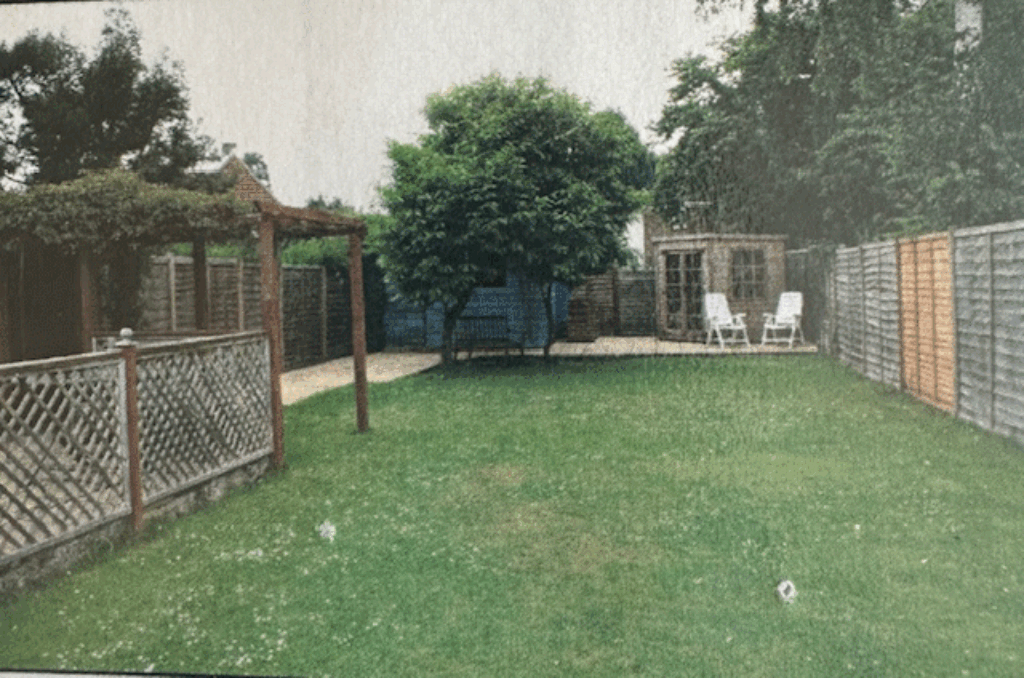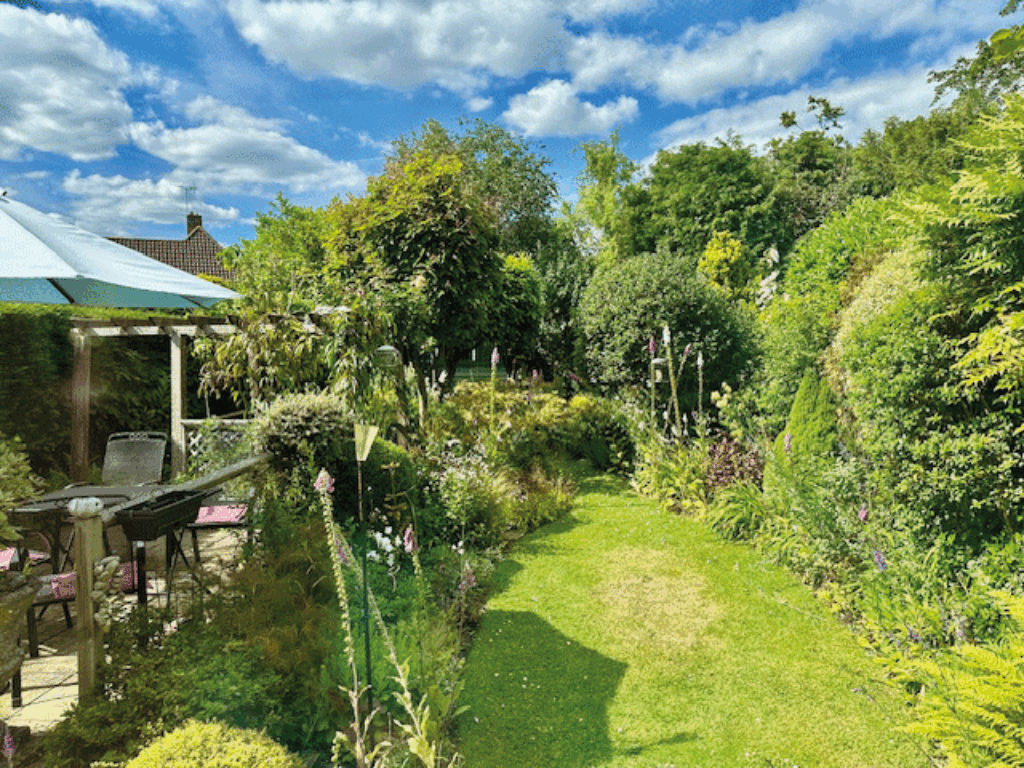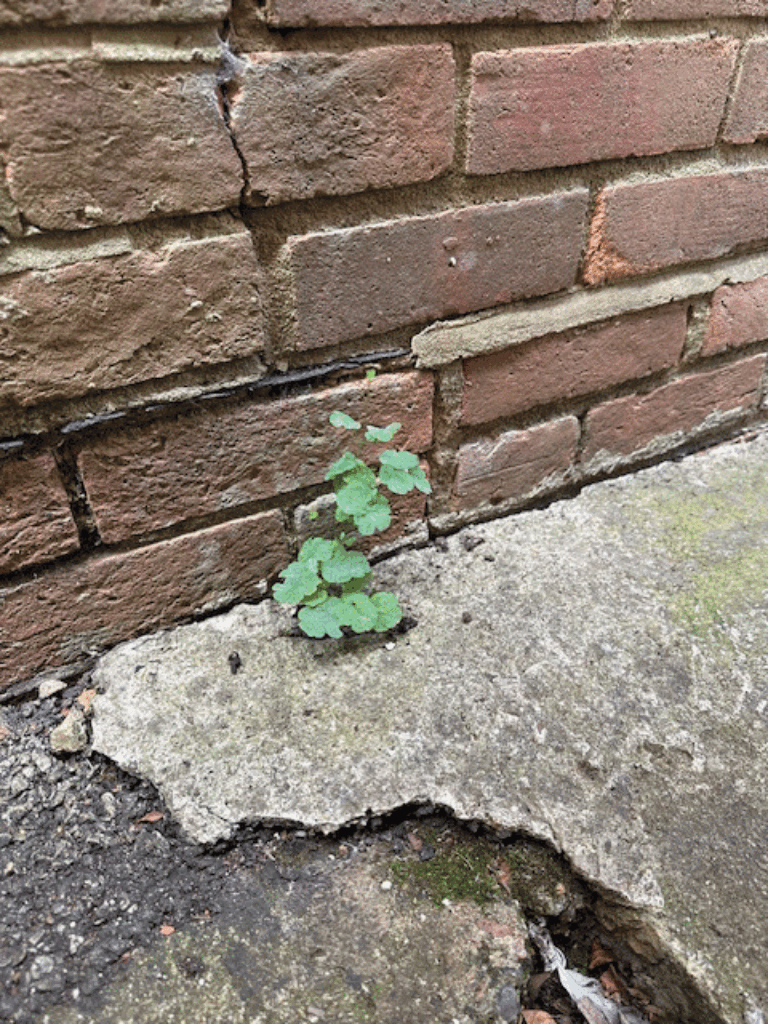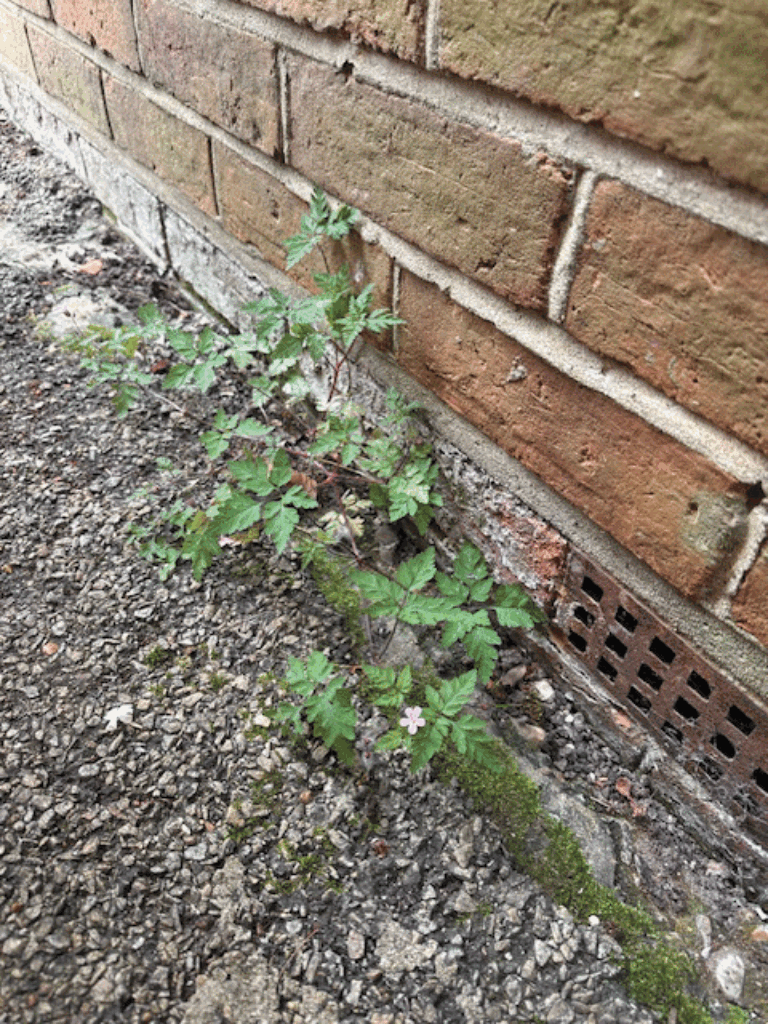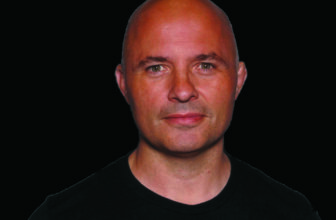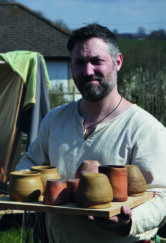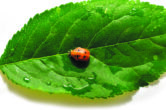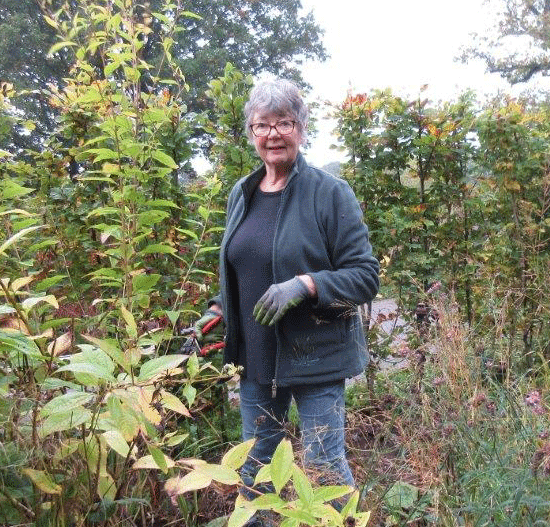
Miki Marks, a Nature enthusiast
I was born in Zimbabwe and spent my childhood in Uruguay. I grew up to the sound of the sea and the smell of pines. Neither of my parents seemed to pay much attention to nature, as I remember. Although my mother was a knowledgeable and talented gardener, she and the other British ladies in the area, seemed to be trying to create an English garden with phlox, roses, sweet peas and delphiniums. None of these plants really suited to the climate or terrain.
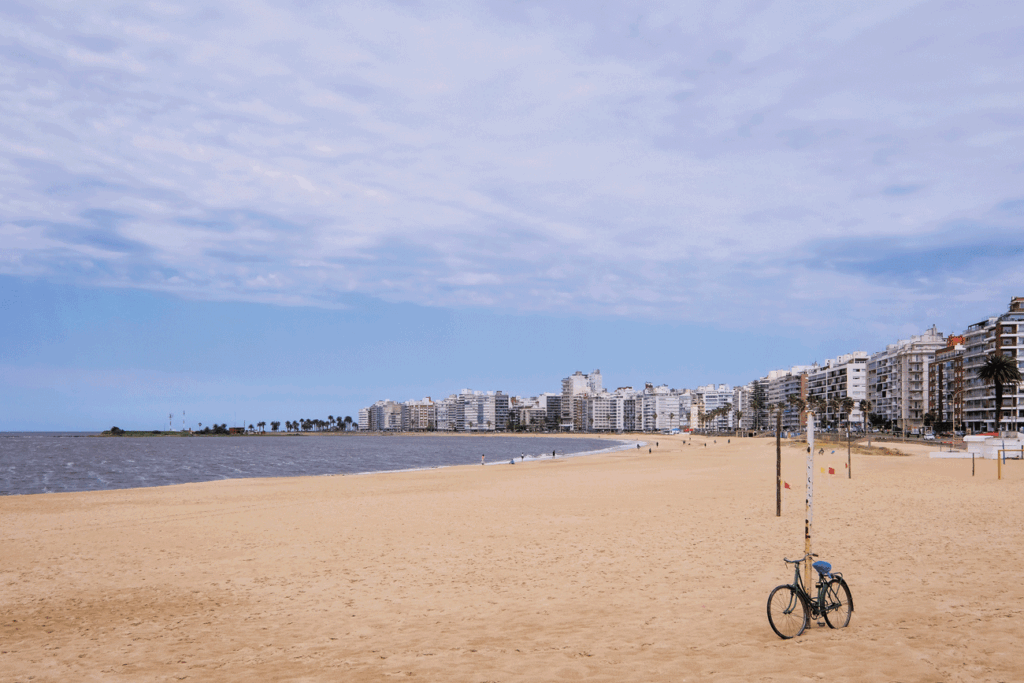
It was not until a 6 month long visit from my English grandfather, when I was about nine years old, that I really started to look around properly. He was fascinated by the ‘foreign’ fauna and flora, and I became his inseparable companion on discovery jaunts. He found a discarded snake skin, unfamiliar birds’ eggs and a strange jelly fish washed up on the beach after a storm. He bought a book on local birds and we set up a ‘table of curiosities’. We were often late for meals and generally filthy dirty when we returned home – especially when we decided to make a pond by damming a stream running through woods opposite our house.
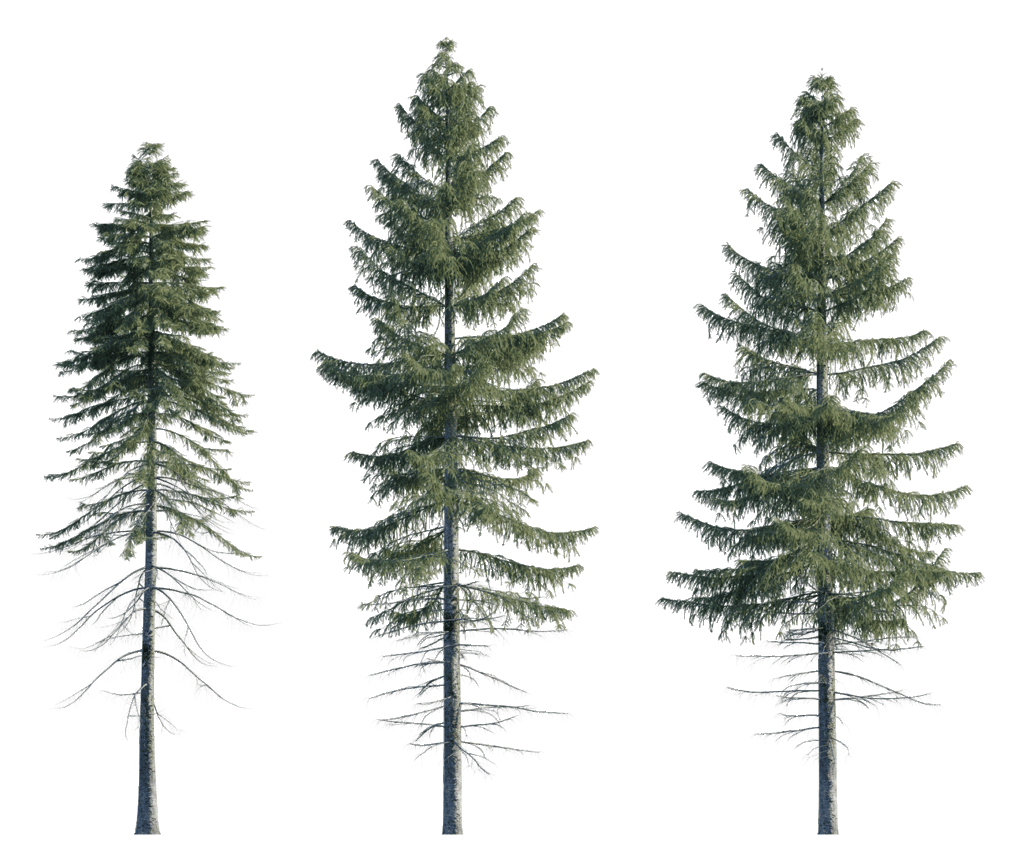
I came to England, to a convent school, when I was 16 to do my A levels, as they were then, and it was the first time I had the opportunity to study biology in depth. I was the sole candidate doing Biology S level and had a wonderful time. I spent most of my free periods in the bio lab with Sister Bede, as we re-did the whole plant slide collection, catalogued the books and arranged a row of jars with a very eclectic collection of specimens in formaldehyde. The school was able to source dead rats from a nearby research laboratory and I found our dissection sessions fascinating though slightly repulsive. The school was also in a coastal town with an aquarium and someone ‘donated’ a live conger eel to the biology department. We put it in the largest container we had – which was hardly large enough – while we considered what to do with it. Conger eels are fierce looking creatures and we were afraid of it. We were both in the lab a couple of evenings after the arrival of the conger when it decided it had had enough in its constricting container and with a mighty flick it jumped right out on to the floor! Sister Bede and I ran panic stricken, into the corridor. Sister took out her rosary beads and I completely terror-stricken. We could hear the eel thrashing around in the lab. Fortunately we were finally able to call the night porter, who wrapped the eel up in an old coat and promised he would take it back to the aquarium.
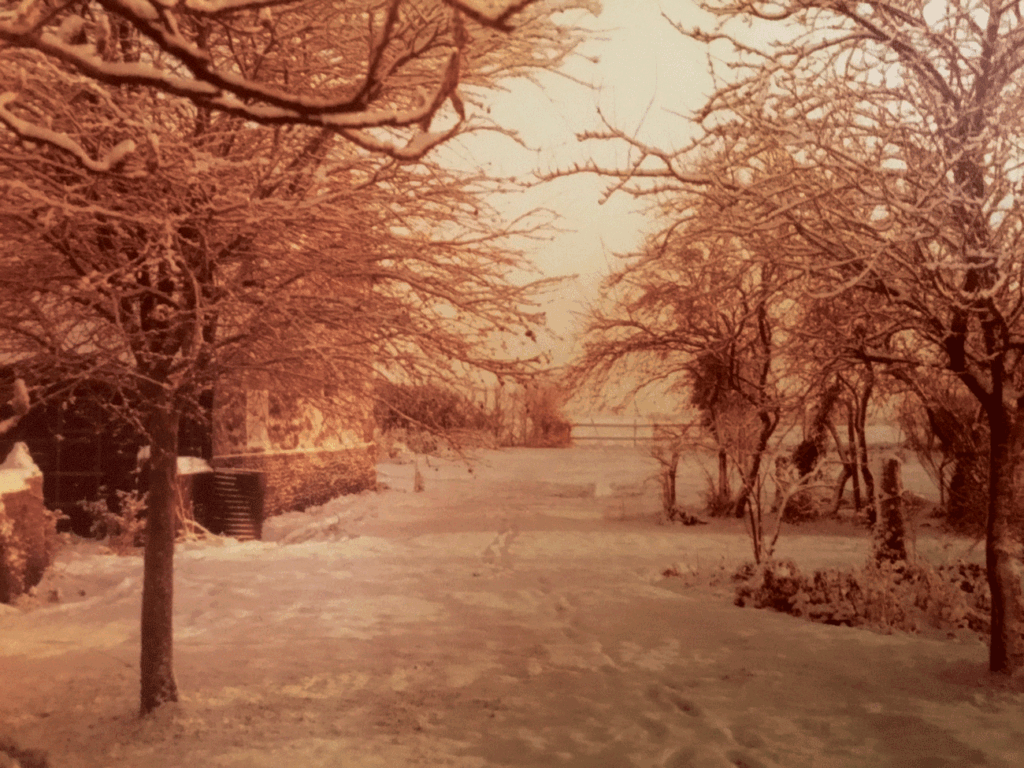
During this time I read everything I could lay my hands on regarding evolution. The convent had only fairly recently come to terms with Charles Darwin.
I had no careers advice and it never occurred to me to pursue my interest in biology. I had already decided that I was going to London when I left school – which seemed to me, where all the exciting things happened. And I was going to be a writer – just as soon as I had lived a little. And what fun those Swinging Sixties were! I did a short secretarial course and got a job in an advertising agency as a copywriter.
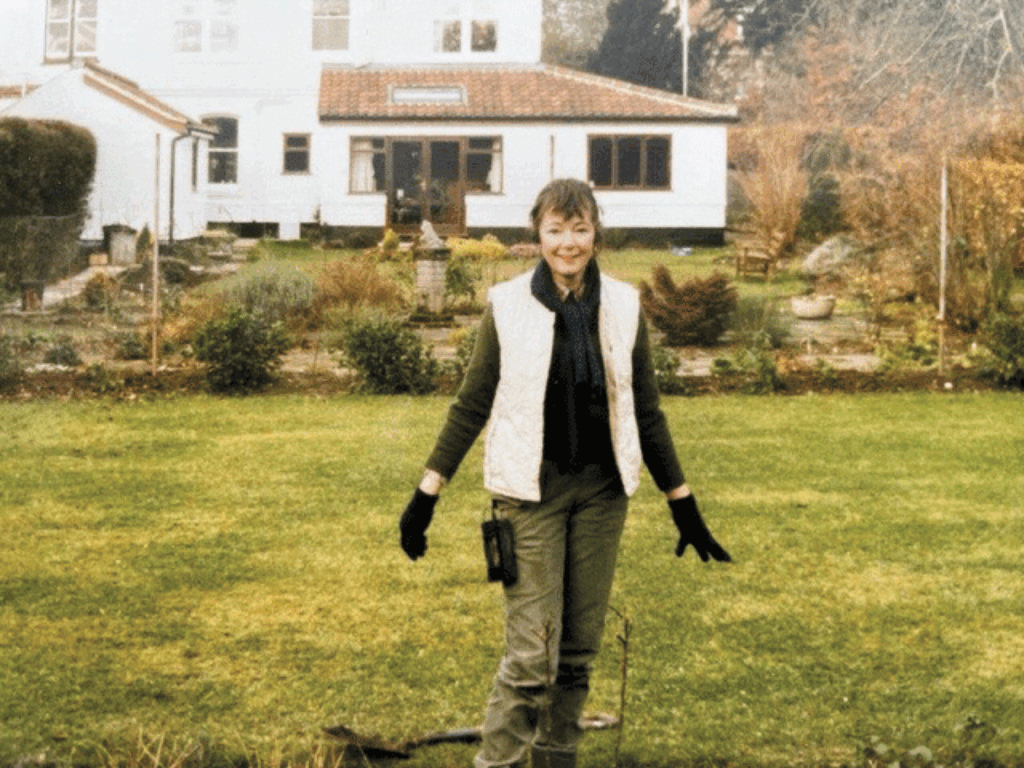
One of the differences I had to adapt to when I moved to Europe was that if you lived and worked in cities, you hardly noticed the changing seasons. Appalling, choking fogs in the winter and although there was less traffic, the air was pretty foul. It was about that time that I began to value the various green spaces around the city and look properly at trees – and loved them not only for their beauty, but for what they contributed both aesthetically and physically to the environment.
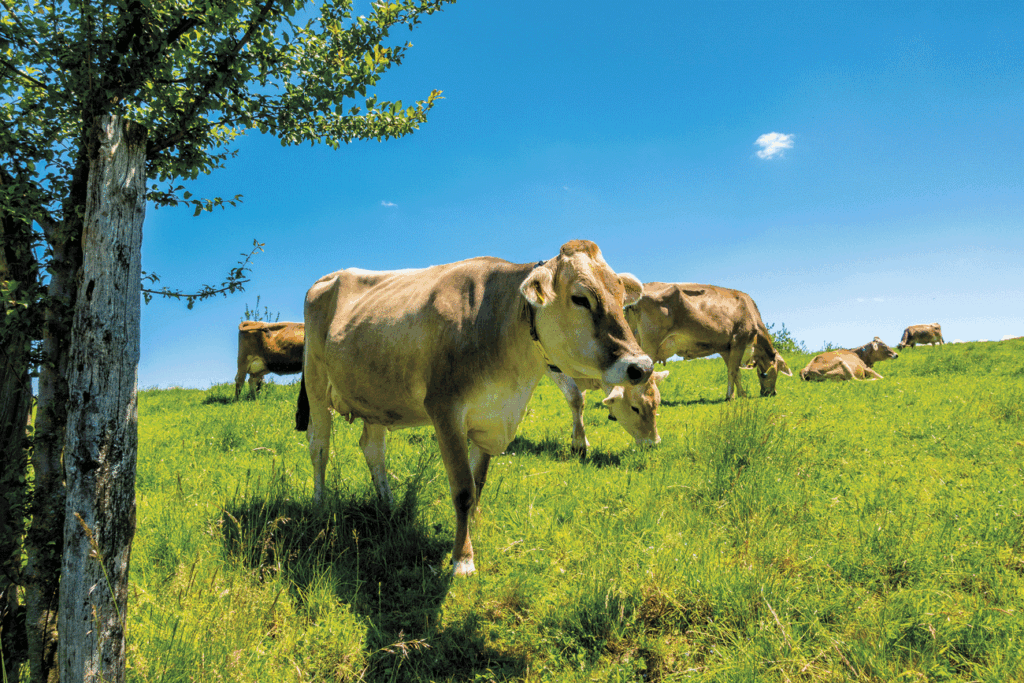
I met Grahame at my first job and in 1966 we got married. Our first home was a tall, thin modern townhouse in Weybridge. Eleven houses in a crescent set in 3 communal acres with trees and shrubs. Although the development was awarded some sort of architectural prize it only stood for about 30 years, before it was flattened to make way for 4 times the amount of dwellings. We moved to a larger house with our daughter Sam, and quite soon our son Peter was born. This was the first time I had a garden of my own and I loved it. Weybridge was very wooded then and the garden had several mature trees, including two Scots pines. The smell and their soughing in the wind, took me right back to memories of my early childhood. Well meaning friends kept telling me that I would have to ‘take the trees out’ but I had no intention of doing so.
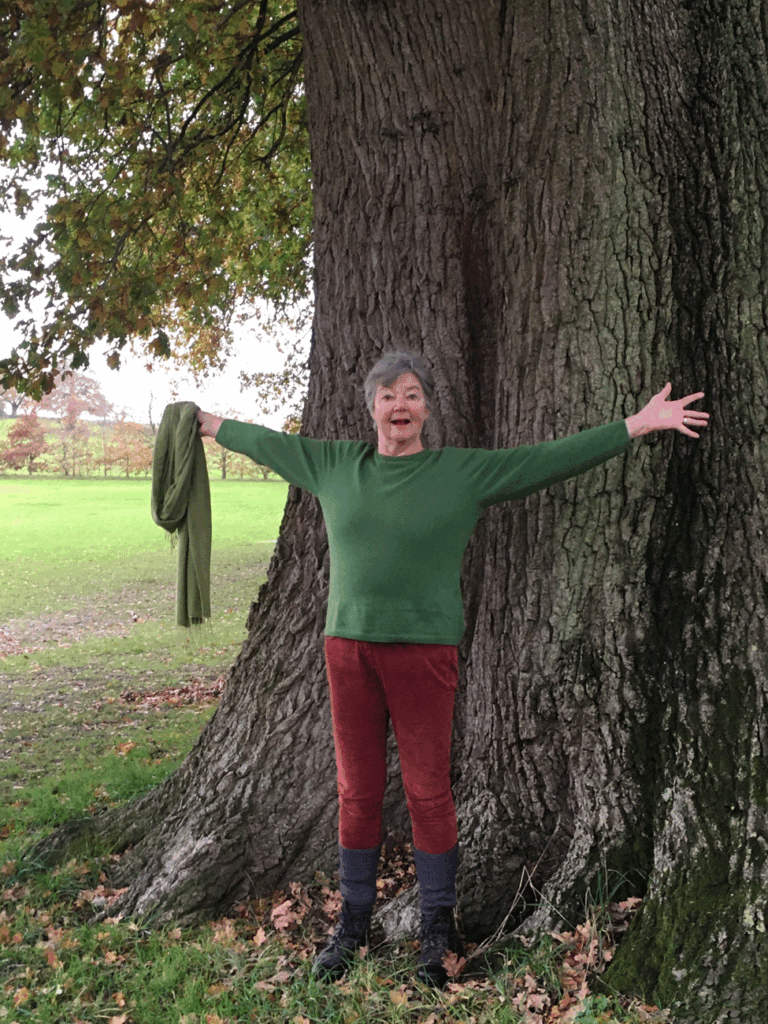
A few years later, in 1980 we moved to Norfolk. We had previously visited friends there several times and I loved the beaches, which reminded me of Uruguay – sand, pines and sea. This was the first time we had lived in a rural area – a few miles from Wymondham. We bought an old farmhouse with a barn which had been converted into a dove house for white fan tail doves. I had a small orchard, pond, vegetable garden and thick hedges all around. The soil was wonderful and everything I planted flourished. That is, until the local farmer started aerial spraying his fields, some of which were adjacent to us. There is of course, no way of protecting yourself from aerial spray and I was horrified. I was extremely concerned about the effects of the pesticides on my children’s health – particularly as the farmers were not obliged to inform anyone when they were about to spray. About the same time farmers were enthusiastically grubbing up hedges, making enormous, desolate fields, and facilitating spray drift. I joined Friends of the Earth – and with their help, sued the local farmer for the damage the spray drift had done to my garden. I had been trying to grow my vegetables and fruit organically. This made me extremely unpopular, as you can imagine. Everyone in the small village depended on that farmer for their jobs and chose to believe that crop spray can’t be dangerous because ‘they wouldn’t allow it if it was, would they?’ It took some years before aerial crop spraying was banned – by which time we had move into Norwich.
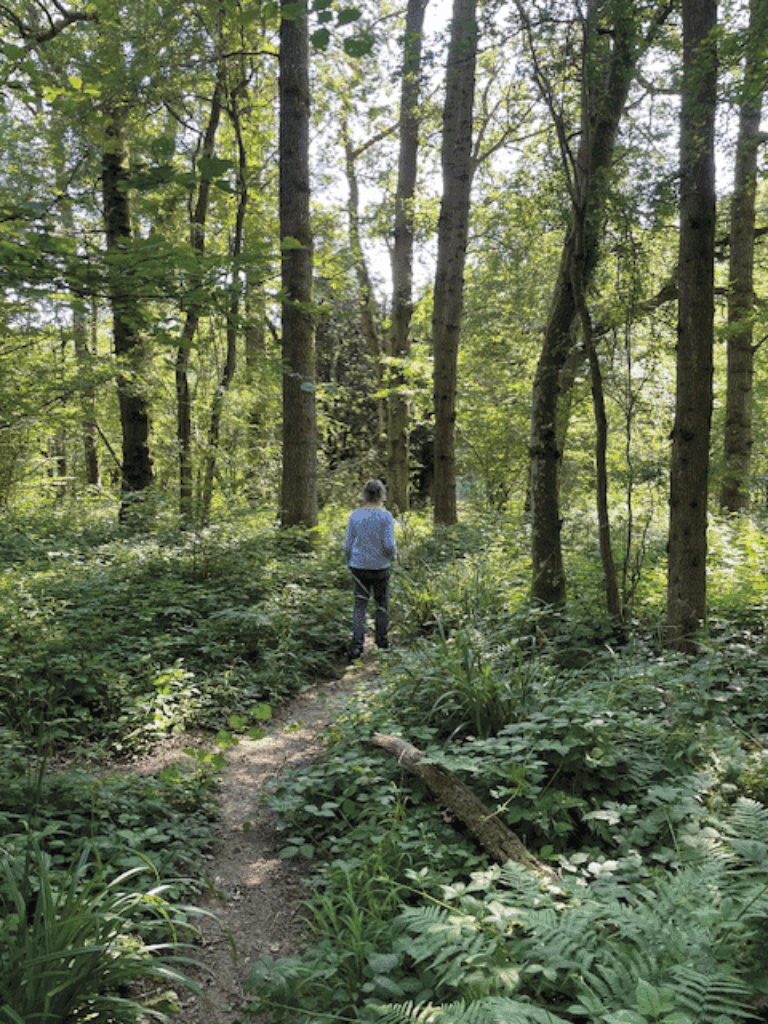
Norwich is a beautiful city – and we were lucky to find a house with a big garden. We were in an area which had once been a tree nursery and many old and interesting trees survived.
I joined a group restoring a large Victoria garden and remember a spirited debate about whether balsam, despite not being native, should be allowed as it was in the original planting scheme. It was the first time I experienced the passions aroused by the ‘native’ or ‘non native’ debate.

I was lucky enough to be able to do an honours degree in Philosophy at the University of East Anglia as a mature student and I was very interested in the growing debate about our relationship with Nature and in particular animal rights. It was an interesting time to be doing Ethics and Political Philosophy and be part of the changing perceptions of our relationship with the rest of Nature.
Perhaps the most moving experience regarding Nature was the sight I had one early spring when walking in the mountains above Lucerne. Traditionally cows are kept inside throughout the winter. On the particular day I was passing, these huge barn doors creaked open and the cows came out and actually danced for joy to be out in the spring sunshine. The French philosopher Descartes should have been with me that day – it would have changed his belief that animals don’t feel pain or pleasure and are just ‘automata’.
It was about this time I also became one of those much derided ‘tree huggers’. Watching trees grow, how they change throughout the seasons, has taught me that trees really have a presence and are fascinating living organisms. I now know that I could not live somewhere without trees. During lockdown, a friend and I had ‘our own’ oak tree and we got great comfort from meeting beside it and quietly hugging our tree.
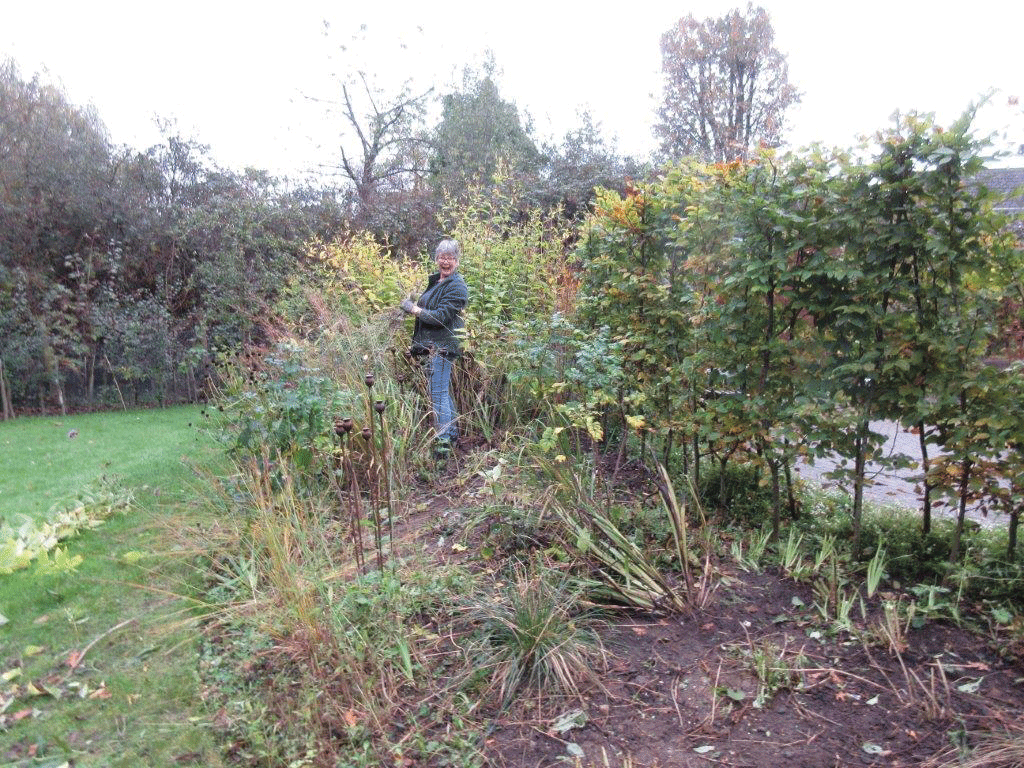
When our children had grown up and moved away we decided to downsize. We chose to move nearer our family and to an area where we had once been happy. We had kept up with a number of Surrey friends and so, in 2007 we moved to Cranleigh. What a lucky choice that was. I love the distant view of surrounding hills and the many fine trees still to be found in Cranleigh. I also greatly value the sense of community and the quiet, valuable work that many volunteers do. Knowle Park is just the latest example of the work volunteers do in our village, to help Nature and make Cranleigh a great place in which to live.
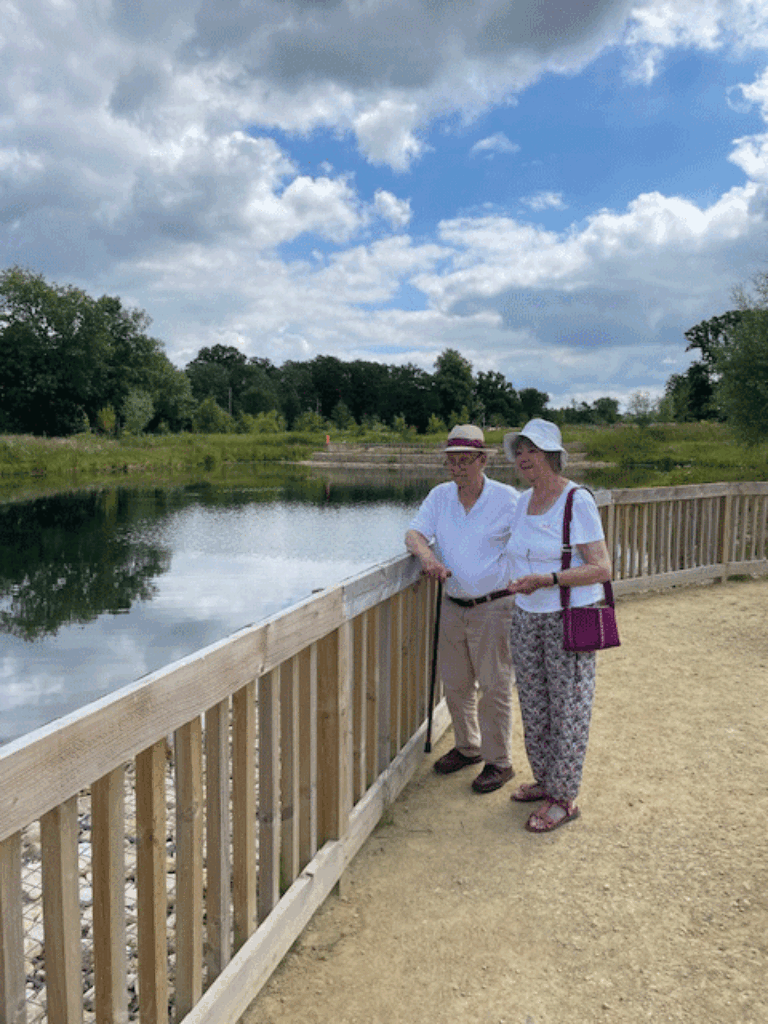
When we moved here, we bought an older house with a garden. By this time, my views on gardening had slowly changed. I no longer went to The Chelsea Flower Show. I was developing an interest in more natural gardening. The garden, when we moved in, was a blank canvas. The previous garden had been obliterated. Slowly I cut beds, planted shrubs and reinstated the pond.
I took the fence down at the end of the garden within the first month, so we could enjoy watching the little brook which even during droughts is never dry. It’s home to sticklebacks and a large variety of insects. Soon the rest of the fencing came down and was replaced with shrubs. I became very relaxed about the plants that appeared in the garden; I have not planted the 13 varieties of wild flowers which now grow here happily including primroses, tragopogons, celandines, orange hawkweed, red campion and oxeye daisy. Daisies in the lawn too, and welcome to them all!
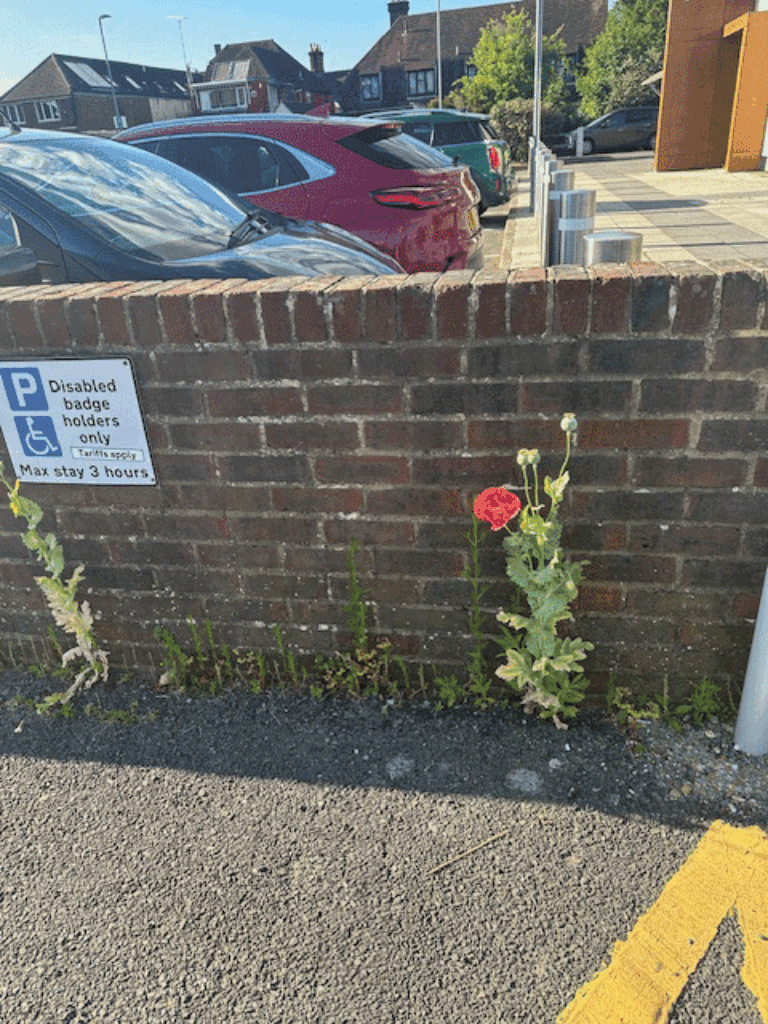
I still had energy to spare so started volunteering at Beryl Harvey Fields – Cranleigh’s conservation site, given to the village by Gordon Harvey in memory of his wife. It is an interesting sloping site with a pond above the allotments off Knowle Lane and we would meet on Sundays once a month to work on a variety of tasks. Then to our dismay we learnt that selling it for development was being considered. Those who knew the place were outraged, but I realised that very few people in Cranleigh knew about this site. It has been rightly said that people don’t try and save what they don’t know about. And so I started writing a monthly article about what was going on at Beryl Harvey Fields and then widened the scope to include Cranleigh and its surroundings. We have so much which is worth protecting. The more I look, the more I learn.
Now that my horizons are necessarily limited I find to my surprise that amazing things happen right under one’s nose. Nature is not all about TV programmes and David Attenborough. I am continually surprised and stimulated by discoveries I make. I am also much cheered watching the resilience of Nature – how plants colonize, push roots into cracks in the pavement, seed themselves anywhere. I love the ribbons of green which flourish, if allowed, between the road and the curb. I often feature these ‘opportunistic’ plants in my monthly articles (see page 28) and once you get your eyes ‘in tune’, you’ll notice they are everywhere in Cranleigh.
Hooray for Wild Wonders!

